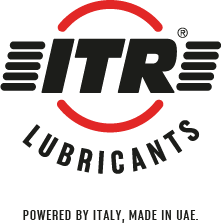The ITR 4T Super Moto fluid is engineered to meet the performance of four-stroke bikes’ diverse needs. The lubricant meets API SN Motorcycle specifications.
Why Use ITR 4T Super Moto Engine Oil?
Use ITR 4T Super Moto for these reasons:
When to Replace Your ITR Super Moto Engine Oil
Your motorcycle needs a regular engine oil change to run efficiently and at its maximum. Super moto lubricant heats, scales, and reduces performance after some time. Ensure that you change the fluid as often as required to keep the bike running smoothly.
Below are some tips to know when your motorcycle is due for an oil change:
Follow the general rule of an oil change
To ensure your motorcycle runs smoothly, change the engine oil every 3,000 to 5,000 kilometres. A regular service as required prevents wear and malfunctions of the engine.
Change of colour and thickness of the fluid
Ordinary engine oil is either blue or brown and consistently thick. Regular exposure to engine combustion thins and darkens the colour of the lubricant. To protect your bike from wear, replace the fluid as soon as you notice changes in the oil.
Decrease of lubricant in volume
If the motorcycle’s engine oil volume decreases, check to ensure there are no oil leaks and replace the fluid. Ensure the motorcycle has at least the minimum required volume of lubricant.
Temperature change
When the lubricant quality decreases, the thermal conductivity in the engine reduces. Poor quality oil also causes an uneven distribution of heat in the machine. If you sense hot air as you ride, it is a sign that it’s time to change the engine oil.
Change of engine sound
A well-oiled engine has an even and smooth sound. When a motorcycle engine has inadequate or poor quality lubricant, it produces a harsh sound when revving the engine. If your bike makes an unusual and unpleasant sound, change the oil.
Comparison Between ITR 4T Tuono, 4T Presto, and 4T Super Moto Brands
With ITR Lubricants, you have many choices to suit any four-stroke motorcycles. Below is a tabulation of the performance and characteristics of our outstanding 4T engine oils:
| Description | ITR 4T Tuono | ITR 4T Presto | ITR 4T Super Moto | |
| SAE20W-40 | SAE15W-50 | SAE10W-40 | SAE20W-50 | |
| Performance Standards | -Meets API SL-JASO MA2 | -Meets API SM-JASO MA2 | -Meets API SN-JASO MA2 | -Meets API SN-JASO MA2 |
| Kinematic Viscosity@100 °C (ASTM D 445): | 14.5-15.0 | 17.0-18.0 | 14.0-14.5 | 14.0-14.5 |
| Viscosity Index (ASTM D 2270): | 115 MIN | 140 MIN | 140-150 | 110 |
| CCS Viscosity (ASTM D 5293) : | <9500 cP@-15 °C | <7000 cP@ 20°C | <7000 cP@ 25°C | <9500 cP@ 15°C |
| Pour Point (ASTM D 97): | <-21°C | <-30°C | <-33°C | <-21°C |
| Flash Point (ASTM D 92 & 93): | >230 | >220 Min | >210 | >230 |
| Total Base Number(ASTM D 2896): | 7.0-8.0 | 7.0-8.0 | 8.0-9.0 | 8.0-9.0 |
Our premium lubricant, ITR 4T Super Moto, is engineered to meet the diverse performance requirements of the engine. It is designed for year-round multipurpose lubrication of the different systems. Request a quote for ITR 4T Super Moto from reputable ITR Lubricants.
